-
 Martha Schwartz
Martha Schwartz
마샤 슈왈츠Q. Bagel Garden, Necco Garden, Rio Shopping Center 등 당신의 초기의 작품들을 보면 기하학적인 선과 반복되는 패턴들, 그리고 팝 아트에 영향을 받은 듯한 유머와 아이러니가 등장한다. 또한 미니멀리즘의 영향도 강하게 보인다. 이러한 기하학적 패턴과 아이러니, 그리고 미니멀리즘이 당신의 작품에 등장하게 된 까닭이 무엇인지 궁금하다.
A. 나는 어릴 때부터 기하학적인 문양에 관심이 많았다. 내가 학생 때 했던 미술작품들의 스케치에도 기하학적 요소가 보인다는 말을 종종 듣곤 했다. 기하학적인 문양은 각 지역의 문화에 따라 서로 다른 상징과 일종의 신비함을 가지고 있어서 더욱 관심이 많았던 것 같다. 내 작품에 보이는 팝아트의 요소에 대해 말하자면, 나는 앤디 워홀이 한창 전성기일 때와 같은 젊은 시절을 공유했다. 내 베이글 가든은 어떤 면에서 앤디 워홀의 브릴로 상자(Brillo Boxes)들과 비슷하다. 앤디워홀의 브릴로 상자들이 전시장에 있는 것 자체가 아이러니한 것처럼, 베이글이 정원의 요소가 된다는 것이 얼마나 아이러니한가? 조경의 언어가 미술의 언어를 공유한 것이라고나 할까? 또한 나는 미니멀리즘이 전성기일 때를 공유한 세대로서, 미니멀리즘이 조경에 미친 영향에 대해 항상 긍정적으로 생각한다. 가장 적은 재료로 가장 강력한 개념을 창출한 미니멀리즘 작가들의 힘은 조경 작품을 만드는데매우 의미 있는 선례가 된다. 사실 미술이 변화하는 세상을 가장 잘 반영하는 장르인 것은 미술이 새로운 개념을 수용하고 보여주는데 매우 자유롭기 때문이다. 때문에 나는 현대미술에 여전히 관심이 많다. 또한 나는 현대 미술이 기초하는 대중문화 역시 관심이 많다. 조경가들은 현재 벌어지는 재미난 문화현상들에 대해 항상 열려 있어야한다고 생각한다.
Q. These days, the scope and scale of your projects produced in MSP are extremely diverse ranging from small urban gardens to regional urban projects. You initially gained publicity in design circles for your small-scaled, very playful provisional landscape installations such as Bagel Garden or Splice Garden. Today you are working on large-scale, ‘permanent’ landscapes such as a master planning of Doha Corniche at Qatar. How these transition has occurred?
A. When I came into the profession I didn’t know anything about landscape architecture. I came in from art world. I had a slightly different agenda than most people in the landscape architecture does. I wanted to make a landscape-scaled art. When I started early off, I started making art installations which were basically a manifesto. I could see how limited and boring it was the profession of landscape architecture in thirty years ago: it was very serious, corporate, male-oriented world. There were even ‘appropriate’ landscapes and ‘inappropriate’ landscapes. So, when I did a Bagel Garden, it was such a big controversy; people were outraged!
My point of that piece was about, ‘who says the landscape has to be a certain way?’ People often have a very romanic view on how the landscape should be. But in urban condition, we make a landscape on a super-structure, like building landscapes on a tanker. Hence, as long as we're building our landscape, it can be anything. Why are there such cultural restrictions about what can happen in the landscape? the problem is that desire also keeps us back from seeing the landscape as ‘what has become’, which is built, designed, determined environment that humans increasingly have to live in. It's not nature.
I found it more interesting that people flicked out and it caused such a tectonic shift in a profession. I kept doing these small installations. I didn't have any client. They were very ‘unprofessional’ works. But I did them as an artist. I believed that I could change the world in a very small space because of my strong concept. It doesn't make less important than permeant gardens just because my little garden last in two days. So, it's all about the quality of thought. That's a power of artists.
My work has expended very slowly. Now we work with city. But I haven’t lost my desire to make something unique. Everytime our team visit sites we try to make something very special for that site. We try not to duplicate what we’ve done before. We also work in a way that the client, users, and people have a voice where we use the design process to find out what people like. We're flexible in terms of coming up with ideas.
The world is changing so much. Since the time I was born the population have been tippled. I’ve been really questioning about how the design actually do for this changing circumstance. That’s the question that the designers have to be able to answer: what value are we providing? Does design really matter? If it does, how do we articulate our value? These are very interesting questions because we have to substantiate how the landscape will make a better city. Unlike many environmentalist who make economic equations to convince people, we need to make longer equations see if the people and city would work in much longer term. We have to all be better trying to explain our value of the landscape in the built environment and what we do affect to the issue of sustainability. That's what I am trying to do now.
-
 Design of a Memorial to Japanese Military \'Sexual Slavery\'
Design of a Memorial to Japanese Military \'Sexual Slavery\'
일본군 '위안부' 메모리얼 설계: 피해자 그림분석을 중심으로과거 일본군 '위안부' 피해사실이 세상에 알려진 이후 피해/생존자들은 관련단체들과 함께 문제 해결을 위해 끊임없이 노력해 왔으며, 이러한 노력은 최근에 이르러 ‘전쟁과 여성인권 박물관’ 건립과 주한 일본대사관 앞 ‘평화비’ 설치라는 결과로 이어졌다.하지만 독립공원 내 ‘전쟁과 여성인권 박물관’의 건립을 반대하는 목소리와 일본정부의 철거 요구로부터 ‘평화비’를 지켜내고자 하는 목소리가 공존하는 우리사회의 모습을 통해 일본군 ‘위안부’의 역사적 의미에 대한 사회적 합의과정과 이를 반영하고 수용할 수 있는 공간적 장치로서 메모리얼 조성의 필요성을 함께 엿볼 수 있다.이에 본 연구에서는 사건의 역사적 의미에 대한 고찰을 통해 일본군 ‘위안부’라는 주제가 갖는 특수성을 도출하고 그에 부합하는 메모리얼 설계방법을 제안하고자 하였다. 주제의 민감성으로 인해 간접적 증언인 피해자 그림의 분석방법을 사용하여 설계요소를 도출하고, 피해자들의 직간접적인 참여를 통해 생산해낸 증언의 해석과 연구자의 참여관찰 결과를 병행하였다. 이를 실제 대상지에 적용하는 과정을 통해 여러 세대에 걸쳐 역사적 의미의 공유와 전승이 이뤄질 수 있는 메모리얼 계획안을 제안하였다.
After the announcement of damage done by Japanese military sexual slavery previously, the victims/survivors have continued their efforts to solve problems with related organizations. Recently, these efforts have led to theresults of promoting the establishment of ‘War and Women’s Human Rights Museum’ and placing ‘Peace Monument’ in front of Embassy of Japan in Korea.Opposition on establishing ‘War and Women’s Human Rights Museum’ in Seodaemun Independence Park and request for protecting ‘Peace Monument’ from the call for removal of Japanese government have coexisted in Korean society. Thus, it is possible to observe the necessity of the process of social consensus on historical meaning of Japanese military ‘sexual slavery’ and developing a memorial as a spatial object that can reflect and accept this. Thus, this study aimed to propose a memorial design method that are appropriate for the thematic particularities of Japanese military ‘sexual slavery’ by consideration of the historical meaning. Due to the sensitiveness of the theme, this study derived the design element by the analysis method of the victims’ pictures, which are indirect witnesses and combined the participant observation of researchers with the analysis of testimony that was produced by direct and indirect participation of the victims. This study proposed a memorial plan that can share and transmit the historical meaning over several generations through a process applying this to the actual object area.
-
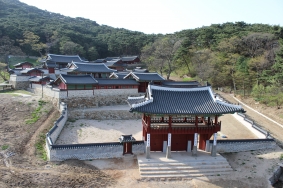 남한산성 행궁
남한산성 행궁
Haenggung of Namhansanseong남한산성 행궁은 경기도 광주시 중부면 산성리 935-1번지 일원에 위치하며, 면적은 19,256㎡로 전쟁중이나 내란 등 유사시 후방의 지원군이 도착할 때까지 한양 도성 궁궐을 대신할 피난처로 사용하기 위해 조선 인조4년(1626)에 조영되었다. 행궁 중 종묘와 사직을둔 유일한 행궁으로 한남루(漢南樓), 외행전(外行殿), 내행전(內行殿), 좌승당(坐勝堂), 이위정(以威亭), 정전(正殿), 영녕전(永寧殿) 등이 자연과 인공이 화합하는 순응의 미학을 공간적, 지형적으로 연계시키고 있다. 2007년 6월 8일 사적 480호로 지정되었다.
-
 Martha Schwartz
Martha Schwartz
마샤 슈왈츠Q. Bagel Garden, Necco Garden, Rio Shopping Center 등 당신의 초기의 작품들을 보면 기하학적인 선과 반복되는 패턴들, 그리고 팝 아트에 영향을 받은 듯한 유머와 아이러니가 등장한다. 또한 미니멀리즘의 영향도 강하게 보인다. 이러한 기하학적 패턴과 아이러니, 그리고 미니멀리즘이 당신의 작품에 등장하게 된 까닭이 무엇인지 궁금하다.
A. 나는 어릴 때부터 기하학적인 문양에 관심이 많았다. 내가 학생 때 했던 미술작품들의 스케치에도 기하학적 요소가 보인다는 말을 종종 듣곤 했다. 기하학적인 문양은 각 지역의 문화에 따라 서로 다른 상징과 일종의 신비함을 가지고 있어서 더욱 관심이 많았던 것 같다. 내 작품에 보이는 팝아트의 요소에 대해 말하자면, 나는 앤디 워홀이 한창 전성기일 때와 같은 젊은 시절을 공유했다. 내 베이글 가든은 어떤 면에서 앤디 워홀의 브릴로 상자(Brillo Boxes)들과 비슷하다. 앤디워홀의 브릴로 상자들이 전시장에 있는 것 자체가 아이러니한 것처럼, 베이글이 정원의 요소가 된다는 것이 얼마나 아이러니한가? 조경의 언어가 미술의 언어를 공유한 것이라고나 할까? 또한 나는 미니멀리즘이 전성기일 때를 공유한 세대로서, 미니멀리즘이 조경에 미친 영향에 대해 항상 긍정적으로 생각한다. 가장 적은 재료로 가장 강력한 개념을 창출한 미니멀리즘 작가들의 힘은 조경 작품을 만드는데매우 의미 있는 선례가 된다. 사실 미술이 변화하는 세상을 가장 잘 반영하는 장르인 것은 미술이 새로운 개념을 수용하고 보여주는데 매우 자유롭기 때문이다. 때문에 나는 현대미술에 여전히 관심이 많다. 또한 나는 현대 미술이 기초하는 대중문화 역시 관심이 많다. 조경가들은 현재 벌어지는 재미난 문화현상들에 대해 항상 열려 있어야한다고 생각한다.Q. These days, the scope and scale of your projects produced in MSP are extremely diverse ranging from small urban gardens to regional urban projects. You initially gained publicity in design circles for your small-scaled, very playful provisional landscape installations such as Bagel Garden or Splice Garden. Today you are working on large-scale, ‘permanent’ landscapes such as a master planning of Doha Corniche at Qatar. How these transition has occurred?
A. When I came into the profession I didn’t know anything about landscape architecture. I came in from art world. I had a slightly different agenda than most people in the landscape architecture does. I wanted to make a landscape-scaled art. When I started early off, I started making art installations which were basically a manifesto. I could see how limited and boring it was the profession of landscape architecture in thirty years ago: it was very serious, corporate, male-oriented world. There were even ‘appropriate’ landscapes and ‘inappropriate’ landscapes. So, when I did a Bagel Garden, it was such a big controversy; people were outraged!
My point of that piece was about, ‘who says the landscape has to be a certain way?’ People often have a very romanic view on how the landscape should be. But in urban condition, we make a landscape on a super-structure, like building landscapes on a tanker. Hence, as long as we're building our landscape, it can be anything. Why are there such cultural restrictions about what can happen in the landscape? the problem is that desire also keeps us back from seeing the landscape as ‘what has become’, which is built, designed, determined environment that humans increasingly have to live in. It's not nature.
I found it more interesting that people flicked out and it caused such a tectonic shift in a profession. I kept doing these small installations. I didn't have any client. They were very ‘unprofessional’ works. But I did them as an artist. I believed that I could change the world in a very small space because of my strong concept. It doesn't make less important than permeant gardens just because my little garden last in two days. So, it's all about the quality of thought. That's a power of artists.
My work has expended very slowly. Now we work with city. But I haven’t lost my desire to make something unique. Everytime our team visit sites we try to make something very special for that site. We try not to duplicate what we’ve done before. We also work in a way that the client, users, and people have a voice where we use the design process to find out what people like. We're flexible in terms of coming up with ideas.
The world is changing so much. Since the time I was born the population have been tippled. I’ve been really questioning about how the design actually do for this changing circumstance. That’s the question that the designers have to be able to answer: what value are we providing? Does design really matter? If it does, how do we articulate our value? These are very interesting questions because we have to substantiate how the landscape will make a better city. Unlike many environmentalist who make economic equations to convince people, we need to make longer equations see if the people and city would work in much longer term. We have to all be better trying to explain our value of the landscape in the built environment and what we do affect to the issue of sustainability. That's what I am trying to do now.
-
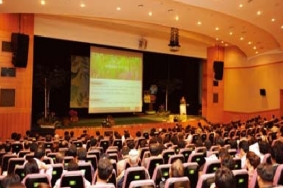 도시농업과 정원문화가 만나는 새로운 패러다임
도시농업과 정원문화가 만나는 새로운 패러다임
‘2012 경기정원문화박람회’ 개최기념 심포지엄지난 5월 3일, 성균관대학교 자연과학캠퍼스 대강당에서 경기도와 수원시가 주최하고 경기농림진흥재단, 경기도농업기술원, (사)한국조경사회가 주관하는 ‘2012 경기정원문화박람회’ 개최 기념 심포지엄이 개최되었다. 이번 심포지엄은 ‘생활 속 정원 확대 및 도시농업 확대를 통한 도시 미화운동의 재점화’라는 박람회의 의의를 홍보하고 국민들의 공감대를 형성하기 위한 목적으로 개최되었다.
예창근 경기도 행정2부지사는 개회사에서 “경기정원문화박람회의 성공적인 개최를 위해 각계 전문가들을 통해 정원문화의 선진 사례를 들어보고 좋은 대안을 만들기 위해 심포지엄이 마련되었다.”고 전하며, “경기도는 앞으로도 정원문화의 새로운 패러다임을 제시하여 생활 속에 푸른 정원문화가 확산될 수 있도록 정책적 지원을 아끼지 않을 것”을 약속했다. 또한 경기농림재단 민기원 대표이사는 “박람회를 통해 수원시의 도시브랜드 위상이 한층 높아지고, 서호공원이 대한민국 도시의 대표공원으로 발전할 것을 기대한다.”면서 박람회가 도시이미지 향상에 기여할 수 있음을 강조하여 이번 박람회에 대한 관심을 고조시켰다.심포지엄에 앞서 예창근 경기도 행정2부지사, 염태영 수원시장, 민기원 경기농림진흥재단 대표이사, 이민우 (사)한국조경사회 회장 등 4개 기관장은 ‘2012 경기정원문화박람회’의 성공적인 개최를 위한 ‘업무협약’을 체결하였으며, 이재준 수원시 행정2부시장의 박람회 마스터플랜 발표와 함께 본격적인 심포지엄 행사에 들어갔다.
-
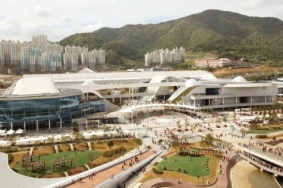 Expo 2012 Yeosu Korea
Expo 2012 Yeosu Korea
2012 여수세계박람회 개막, 93일간의 대장정 돌입‘살아 있는 바다, 숨 쉬는 연안’을 주제로 Big-O쇼 등 볼거리 풍성그늘막, 수경 시설 등 조경시설로 쾌적한 박람회장 구현지난 5월 11일 개막한 2012 여수세계박람회(EXPO 2012 YEOSU KOREA)가 12일 공식 개장식을 통해 93일간의 대장정에 돌입했다. 여수세계박람회는 바다를 주제로 한 첫 박람회로 ‘살아 있는 바다, 숨 쉬는 연안’을 주제로 하고 있다. 박람회의 주제를 부각시키며 관람객들로 하여금 쾌적하고 즐거운 체험의 장이 될 수 있도록 박람회장 전시관 외부공간을 축제분위기로 조성하고 있다. 행사장은 전시 면적 25만㎡와 종사자 숙박시설, 환승주차장, 공원, 녹지 등 지원시설을 포함해 174만㎡ 규모이며, 바다, 땅, 숲, 바람의 공간 등 4가지 테마로 구성해 ‘해양과 육지, 인류와 자연, 과거와 미래의 조화’를 구현해 놓았다.
‘빅오쇼’ 등 다양한 볼거리 가득한 여수세계박람회 전시시설은 크게 4대 특화시설과 체험 전시실, 주최국 전시관, 참여 전시관으로 구분된다. 4대 특화시설은 국내 최대 아쿠아리움, ‘거대한 바다(Big Ocean)’라는 뜻으로 박람회장 앞바다의 방파제를 육지와 연결하여 꾸민 해상 무대 빅오(Big-O), 세계에서 가장 큰 소리(138.4dB)를 내는 파이프오르간 복스 마리스(Vox maris)가 설치된 스카이 타워, 국제관 양쪽을 연결한 천장에 설치된 LED스크린 엑스포디지털갤러리(EDG) 등으로 구성된다. 특히 매일 밤 여수 밤바다를 화려하게 수놓으며 여수세계박람회의 하이라이트라 불리는 빅오쇼는 세계 최초로 홀로그램 영상을 구현한 리빙스크린을 통해 거대한 워터 스크린 위에 바다를 탐험하는 소녀의 이야기를 보여주며 관람객들의 흥미를 끌고 있다. 빅오는 지름 35m 규모의 O형 구조물인 ‘디오(The O)’, 초대형 해상분수, 자유자재로 물속에 잠겼다 떠올랐다 하는 해상무대인 ‘이어도’ 등으로 구성되어있으며 디오와 해상분수는 국내 수경시설 전문업체 플러스파운틴(주)가 실시설계 하였다. 또한 여수세계박람회 국제관에는 104개 나라가 직접 기획한 독특한 컨셉의 국가관들이 관람객을 기다리고 있다. 4개의 건물로 이루어진 국제관은 엑스포디지털갤러리 지붕으로 연결돼 있다. 한낮의 뜨거운 태양빛을 가려주며, 환상적인 디지털 영상까지 볼 수 있는 공간이다.
-
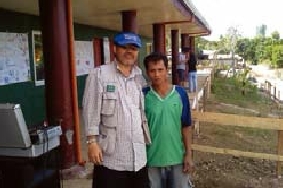 쿠마바오(Cumabao)에서의 다짐
쿠마바오(Cumabao)에서의 다짐
대학에서 조경을 처음 공부하기 시작한 게 지난 1977년이니까 그 이후로 지금까지 35년, 동명기술공단이란 엔지니어링회사에서 근무한 지도 어언 20여 년이 지났다. 참으로 ‘인생의 황금기’라고 할 수 있는 30~40대를 모두 설계용역회사에서 근무하면서 보냈지만 회상해 보건데 나름대로 만족하며 뜻있게 보낸 것 같다. 조경분야는 우리나라 경제가 성장을 하고 국가의 인프라를 안정적으로 갖춰가는 시기에 참으로 많은 일을 했으며, 그 결과 괄목할 만한 성과를 거둔 분야이다. 이러한 시기에 엔지니어링 회사에 근무했다는 것은 이보다 더 좋을 수 없었을 것이라고 해도 과언은 아닐 것이며 후회할 것 없이 잘 지내온 세월인 것 같다. 돌이켜 보건대 비교적 빠른 기술사 취득과 대형 엔지니어링 회사의 부서장과 임원으로서의 경험, 조경계에서의 나름의 많은 인맥의 구축, 여러 대학과 대학원에서의 오랜 강의경력과 박사과정의 학업, 60회가 넘는 해외출장 및 다양한 프로젝트의 경험 등은 적어도 그런대로 인생에 있어서 보람된 기간이었다고 자족해 본다.
-
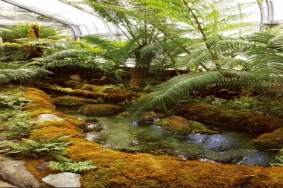 미국 국립식물원
미국 국립식물원
The United States Botanic Garden워싱턴 D.C의 오아시스 같은 정원영국에는 큐가든이 있고 독일에는 베를린 식물원, 그리고 호주에는 시드니 왕립식물원이 있다. 우리나라에는 광릉숲에 자리 잡은 500년이 넘는 역사를 자랑하는 국립수목원이 있다. 그렇다면 과연 미국을 대표하는 국립식물원은 어떻게 생겼을까. 미국이라는 큰 나라에 걸맞은 엄청난 규모의 국립식물원을 예상했다면 약간의 실망을 할지도 모르겠다. 바로 워싱턴 D.C(Washington D.C.)의 내셔널 몰(National Mall) 안에 기대보다는 아담한 규모로 자리 잡고 있기 때문이다. 필자가 거주하는 델라웨어대학교 부근에서 워싱턴 D.C까지는 차로 두 시간 정도 걸리는데, 보통 3월 말에서 4월 초에 열리는 벚꽃 축제를 보러 가거나, 가끔씩 스미소니언박물관을 찾곤 한다. 서쪽의 워싱턴 기념비와 동쪽의 국회의사당을 한 축으로 그 사이에 조성된 내셔널 몰에 위치한 스미소니언박물관은 자연사박물관과 미술관, 항공우주박물관 등 19개의 박물관이 있어 하루에 두세 군데씩 방문한다 해도 모두를 다 관람하려면 일주일은 족히 걸린다. 거기다가 박물관마다 주변에 조성된 스미소니언 가든과 미국 국립식물원까지 자세히 구경할 계획이라면 최소한 하루 정도는 따로 더 추가해야 할 것이다. 볼거리도 많고 즐길 거리도 많은 가운데 더 반가운 소식은 이 모든 곳이 무료로 관람이 가능하다는 것이다. 그래서 이곳은 연중 많은 관람객들, 조깅과 산책을 즐기는 시민들, 그리고 이곳에서 일하는 사람들과 함께 늘 수많은 인파로 붐빈다.
-
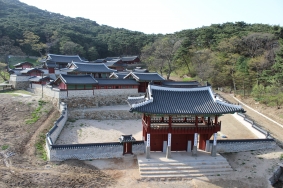 남한산성 행궁
남한산성 행궁
Haenggung of Namhansanseong남한산성 행궁은 경기도 광주시 중부면 산성리 935-1번지 일원에 위치하며, 면적은 19,256㎡로 전쟁중이나 내란 등 유사시 후방의 지원군이 도착할 때까지 한양 도성 궁궐을 대신할 피난처로 사용하기 위해 조선 인조4년(1626)에 조영되었다. 행궁 중 종묘와 사직을둔 유일한 행궁으로 한남루(漢南樓), 외행전(外行殿), 내행전(內行殿), 좌승당(坐勝堂), 이위정(以威亭), 정전(正殿), 영녕전(永寧殿) 등이 자연과 인공이 화합하는 순응의 미학을 공간적, 지형적으로 연계시키고 있다. 2007년 6월 8일 사적 480호로 지정되었다.
-
 Design of a Memorial to Japanese Military ’Sexual Slavery’
Design of a Memorial to Japanese Military ’Sexual Slavery’
일본군 '위안부' 메모리얼 설계: 피해자 그림분석을 중심으로과거 일본군 '위안부' 피해사실이 세상에 알려진 이후 피해/생존자들은 관련단체들과 함께 문제 해결을 위해 끊임없이 노력해 왔으며, 이러한 노력은 최근에 이르러 ‘전쟁과 여성인권 박물관’ 건립과 주한 일본대사관 앞 ‘평화비’ 설치라는 결과로 이어졌다.하지만 독립공원 내 ‘전쟁과 여성인권 박물관’의 건립을 반대하는 목소리와 일본정부의 철거 요구로부터 ‘평화비’를 지켜내고자 하는 목소리가 공존하는 우리사회의 모습을 통해 일본군 ‘위안부’의 역사적 의미에 대한 사회적 합의과정과 이를 반영하고 수용할 수 있는 공간적 장치로서 메모리얼 조성의 필요성을 함께 엿볼 수 있다.이에 본 연구에서는 사건의 역사적 의미에 대한 고찰을 통해 일본군 ‘위안부’라는 주제가 갖는 특수성을 도출하고 그에 부합하는 메모리얼 설계방법을 제안하고자 하였다. 주제의 민감성으로 인해 간접적 증언인 피해자 그림의 분석방법을 사용하여 설계요소를 도출하고, 피해자들의 직간접적인 참여를 통해 생산해낸 증언의 해석과 연구자의 참여관찰 결과를 병행하였다. 이를 실제 대상지에 적용하는 과정을 통해 여러 세대에 걸쳐 역사적 의미의 공유와 전승이 이뤄질 수 있는 메모리얼 계획안을 제안하였다.
After the announcement of damage done by Japanese military sexual slavery previously, the victims/survivors have continued their efforts to solve problems with related organizations. Recently, these efforts have led to theresults of promoting the establishment of ‘War and Women’s Human Rights Museum’ and placing ‘Peace Monument’ in front of Embassy of Japan in Korea.Opposition on establishing ‘War and Women’s Human Rights Museum’ in Seodaemun Independence Park and request for protecting ‘Peace Monument’ from the call for removal of Japanese government have coexisted in Korean society. Thus, it is possible to observe the necessity of the process of social consensus on historical meaning of Japanese military ‘sexual slavery’ and developing a memorial as a spatial object that can reflect and accept this. Thus, this study aimed to propose a memorial design method that are appropriate for the thematic particularities of Japanese military ‘sexual slavery’ by consideration of the historical meaning. Due to the sensitiveness of the theme, this study derived the design element by the analysis method of the victims’ pictures, which are indirect witnesses and combined the participant observation of researchers with the analysis of testimony that was produced by direct and indirect participation of the victims. This study proposed a memorial plan that can share and transmit the historical meaning over several generations through a process applying this to the actual object area.
 Martha Schwartz
마샤 슈왈츠Q. Bagel Garden, Necco Garden, Rio Shopping Center 등 당신의 초기의 작품들을 보면 기하학적인 선과 반복되는 패턴들, 그리고 팝 아트에 영향을 받은 듯한 유머와 아이러니가 등장한다. 또한 미니멀리즘의 영향도 강하게 보인다. 이러한 기하학적 패턴과 아이러니, 그리고 미니멀리즘이 당신의 작품에 등장하게 된 까닭이 무엇인지 궁금하다. A. 나는 어릴 때부터 기하학적인 문양에 관심이 많았다. 내가 학생 때 했던 미술작품들의 스케치에도 기하학적 요소가 보인다는 말을 종종 듣곤 했다. 기하학적인 문양은 각 지역의 문화에 따라 서로 다른 상징과 일종의 신비함을 가지고 있어서 더욱 관심이 많았던 것 같다. 내 작품에 보이는 팝아트의 요소에 대해 말하자면, 나는 앤디 워홀이 한창 전성기일 때와 같은 젊은 시절을 공유했다. 내 베이글 가든은 어떤 면에서 앤디 워홀의 브릴로 상자(Brillo Boxes)들과 비슷하다. 앤디워홀의 브릴로 상자들이 전시장에 있는 것 자체가 아이러니한 것처럼, 베이글이 정원의 요소가 된다는 것이 얼마나 아이러니한가? 조경의 언어가 미술의 언어를 공유한 것이라고나 할까? 또한 나는 미니멀리즘이 전성기일 때를 공유한 세대로서, 미니멀리즘이 조경에 미친 영향에 대해 항상 긍정적으로 생각한다. 가장 적은 재료로 가장 강력한 개념을 창출한 미니멀리즘 작가들의 힘은 조경 작품을 만드는데매우 의미 있는 선례가 된다. 사실 미술이 변화하는 세상을 가장 잘 반영하는 장르인 것은 미술이 새로운 개념을 수용하고 보여주는데 매우 자유롭기 때문이다. 때문에 나는 현대미술에 여전히 관심이 많다. 또한 나는 현대 미술이 기초하는 대중문화 역시 관심이 많다. 조경가들은 현재 벌어지는 재미난 문화현상들에 대해 항상 열려 있어야한다고 생각한다. Q. These days, the scope and scale of your projects produced in MSP are extremely diverse ranging from small urban gardens to regional urban projects. You initially gained publicity in design circles for your small-scaled, very playful provisional landscape installations such as Bagel Garden or Splice Garden. Today you are working on large-scale, ‘permanent’ landscapes such as a master planning of Doha Corniche at Qatar. How these transition has occurred? A. When I came into the profession I didn’t know anything about landscape architecture. I came in from art world. I had a slightly different agenda than most people in the landscape architecture does. I wanted to make a landscape-scaled art. When I started early off, I started making art installations which were basically a manifesto. I could see how limited and boring it was the profession of landscape architecture in thirty years ago: it was very serious, corporate, male-oriented world. There were even ‘appropriate’ landscapes and ‘inappropriate’ landscapes. So, when I did a Bagel Garden, it was such a big controversy; people were outraged! My point of that piece was about, ‘who says the landscape has to be a certain way?’ People often have a very romanic view on how the landscape should be. But in urban condition, we make a landscape on a super-structure, like building landscapes on a tanker. Hence, as long as we're building our landscape, it can be anything. Why are there such cultural restrictions about what can happen in the landscape? the problem is that desire also keeps us back from seeing the landscape as ‘what has become’, which is built, designed, determined environment that humans increasingly have to live in. It's not nature. I found it more interesting that people flicked out and it caused such a tectonic shift in a profession. I kept doing these small installations. I didn't have any client. They were very ‘unprofessional’ works. But I did them as an artist. I believed that I could change the world in a very small space because of my strong concept. It doesn't make less important than permeant gardens just because my little garden last in two days. So, it's all about the quality of thought. That's a power of artists. My work has expended very slowly. Now we work with city. But I haven’t lost my desire to make something unique. Everytime our team visit sites we try to make something very special for that site. We try not to duplicate what we’ve done before. We also work in a way that the client, users, and people have a voice where we use the design process to find out what people like. We're flexible in terms of coming up with ideas. The world is changing so much. Since the time I was born the population have been tippled. I’ve been really questioning about how the design actually do for this changing circumstance. That’s the question that the designers have to be able to answer: what value are we providing? Does design really matter? If it does, how do we articulate our value? These are very interesting questions because we have to substantiate how the landscape will make a better city. Unlike many environmentalist who make economic equations to convince people, we need to make longer equations see if the people and city would work in much longer term. We have to all be better trying to explain our value of the landscape in the built environment and what we do affect to the issue of sustainability. That's what I am trying to do now.
Martha Schwartz
마샤 슈왈츠Q. Bagel Garden, Necco Garden, Rio Shopping Center 등 당신의 초기의 작품들을 보면 기하학적인 선과 반복되는 패턴들, 그리고 팝 아트에 영향을 받은 듯한 유머와 아이러니가 등장한다. 또한 미니멀리즘의 영향도 강하게 보인다. 이러한 기하학적 패턴과 아이러니, 그리고 미니멀리즘이 당신의 작품에 등장하게 된 까닭이 무엇인지 궁금하다. A. 나는 어릴 때부터 기하학적인 문양에 관심이 많았다. 내가 학생 때 했던 미술작품들의 스케치에도 기하학적 요소가 보인다는 말을 종종 듣곤 했다. 기하학적인 문양은 각 지역의 문화에 따라 서로 다른 상징과 일종의 신비함을 가지고 있어서 더욱 관심이 많았던 것 같다. 내 작품에 보이는 팝아트의 요소에 대해 말하자면, 나는 앤디 워홀이 한창 전성기일 때와 같은 젊은 시절을 공유했다. 내 베이글 가든은 어떤 면에서 앤디 워홀의 브릴로 상자(Brillo Boxes)들과 비슷하다. 앤디워홀의 브릴로 상자들이 전시장에 있는 것 자체가 아이러니한 것처럼, 베이글이 정원의 요소가 된다는 것이 얼마나 아이러니한가? 조경의 언어가 미술의 언어를 공유한 것이라고나 할까? 또한 나는 미니멀리즘이 전성기일 때를 공유한 세대로서, 미니멀리즘이 조경에 미친 영향에 대해 항상 긍정적으로 생각한다. 가장 적은 재료로 가장 강력한 개념을 창출한 미니멀리즘 작가들의 힘은 조경 작품을 만드는데매우 의미 있는 선례가 된다. 사실 미술이 변화하는 세상을 가장 잘 반영하는 장르인 것은 미술이 새로운 개념을 수용하고 보여주는데 매우 자유롭기 때문이다. 때문에 나는 현대미술에 여전히 관심이 많다. 또한 나는 현대 미술이 기초하는 대중문화 역시 관심이 많다. 조경가들은 현재 벌어지는 재미난 문화현상들에 대해 항상 열려 있어야한다고 생각한다. Q. These days, the scope and scale of your projects produced in MSP are extremely diverse ranging from small urban gardens to regional urban projects. You initially gained publicity in design circles for your small-scaled, very playful provisional landscape installations such as Bagel Garden or Splice Garden. Today you are working on large-scale, ‘permanent’ landscapes such as a master planning of Doha Corniche at Qatar. How these transition has occurred? A. When I came into the profession I didn’t know anything about landscape architecture. I came in from art world. I had a slightly different agenda than most people in the landscape architecture does. I wanted to make a landscape-scaled art. When I started early off, I started making art installations which were basically a manifesto. I could see how limited and boring it was the profession of landscape architecture in thirty years ago: it was very serious, corporate, male-oriented world. There were even ‘appropriate’ landscapes and ‘inappropriate’ landscapes. So, when I did a Bagel Garden, it was such a big controversy; people were outraged! My point of that piece was about, ‘who says the landscape has to be a certain way?’ People often have a very romanic view on how the landscape should be. But in urban condition, we make a landscape on a super-structure, like building landscapes on a tanker. Hence, as long as we're building our landscape, it can be anything. Why are there such cultural restrictions about what can happen in the landscape? the problem is that desire also keeps us back from seeing the landscape as ‘what has become’, which is built, designed, determined environment that humans increasingly have to live in. It's not nature. I found it more interesting that people flicked out and it caused such a tectonic shift in a profession. I kept doing these small installations. I didn't have any client. They were very ‘unprofessional’ works. But I did them as an artist. I believed that I could change the world in a very small space because of my strong concept. It doesn't make less important than permeant gardens just because my little garden last in two days. So, it's all about the quality of thought. That's a power of artists. My work has expended very slowly. Now we work with city. But I haven’t lost my desire to make something unique. Everytime our team visit sites we try to make something very special for that site. We try not to duplicate what we’ve done before. We also work in a way that the client, users, and people have a voice where we use the design process to find out what people like. We're flexible in terms of coming up with ideas. The world is changing so much. Since the time I was born the population have been tippled. I’ve been really questioning about how the design actually do for this changing circumstance. That’s the question that the designers have to be able to answer: what value are we providing? Does design really matter? If it does, how do we articulate our value? These are very interesting questions because we have to substantiate how the landscape will make a better city. Unlike many environmentalist who make economic equations to convince people, we need to make longer equations see if the people and city would work in much longer term. We have to all be better trying to explain our value of the landscape in the built environment and what we do affect to the issue of sustainability. That's what I am trying to do now. Design of a Memorial to Japanese Military \'Sexual Slavery\'
일본군 '위안부' 메모리얼 설계: 피해자 그림분석을 중심으로과거 일본군 '위안부' 피해사실이 세상에 알려진 이후 피해/생존자들은 관련단체들과 함께 문제 해결을 위해 끊임없이 노력해 왔으며, 이러한 노력은 최근에 이르러 ‘전쟁과 여성인권 박물관’ 건립과 주한 일본대사관 앞 ‘평화비’ 설치라는 결과로 이어졌다.하지만 독립공원 내 ‘전쟁과 여성인권 박물관’의 건립을 반대하는 목소리와 일본정부의 철거 요구로부터 ‘평화비’를 지켜내고자 하는 목소리가 공존하는 우리사회의 모습을 통해 일본군 ‘위안부’의 역사적 의미에 대한 사회적 합의과정과 이를 반영하고 수용할 수 있는 공간적 장치로서 메모리얼 조성의 필요성을 함께 엿볼 수 있다.이에 본 연구에서는 사건의 역사적 의미에 대한 고찰을 통해 일본군 ‘위안부’라는 주제가 갖는 특수성을 도출하고 그에 부합하는 메모리얼 설계방법을 제안하고자 하였다. 주제의 민감성으로 인해 간접적 증언인 피해자 그림의 분석방법을 사용하여 설계요소를 도출하고, 피해자들의 직간접적인 참여를 통해 생산해낸 증언의 해석과 연구자의 참여관찰 결과를 병행하였다. 이를 실제 대상지에 적용하는 과정을 통해 여러 세대에 걸쳐 역사적 의미의 공유와 전승이 이뤄질 수 있는 메모리얼 계획안을 제안하였다. After the announcement of damage done by Japanese military sexual slavery previously, the victims/survivors have continued their efforts to solve problems with related organizations. Recently, these efforts have led to theresults of promoting the establishment of ‘War and Women’s Human Rights Museum’ and placing ‘Peace Monument’ in front of Embassy of Japan in Korea.Opposition on establishing ‘War and Women’s Human Rights Museum’ in Seodaemun Independence Park and request for protecting ‘Peace Monument’ from the call for removal of Japanese government have coexisted in Korean society. Thus, it is possible to observe the necessity of the process of social consensus on historical meaning of Japanese military ‘sexual slavery’ and developing a memorial as a spatial object that can reflect and accept this. Thus, this study aimed to propose a memorial design method that are appropriate for the thematic particularities of Japanese military ‘sexual slavery’ by consideration of the historical meaning. Due to the sensitiveness of the theme, this study derived the design element by the analysis method of the victims’ pictures, which are indirect witnesses and combined the participant observation of researchers with the analysis of testimony that was produced by direct and indirect participation of the victims. This study proposed a memorial plan that can share and transmit the historical meaning over several generations through a process applying this to the actual object area.
Design of a Memorial to Japanese Military \'Sexual Slavery\'
일본군 '위안부' 메모리얼 설계: 피해자 그림분석을 중심으로과거 일본군 '위안부' 피해사실이 세상에 알려진 이후 피해/생존자들은 관련단체들과 함께 문제 해결을 위해 끊임없이 노력해 왔으며, 이러한 노력은 최근에 이르러 ‘전쟁과 여성인권 박물관’ 건립과 주한 일본대사관 앞 ‘평화비’ 설치라는 결과로 이어졌다.하지만 독립공원 내 ‘전쟁과 여성인권 박물관’의 건립을 반대하는 목소리와 일본정부의 철거 요구로부터 ‘평화비’를 지켜내고자 하는 목소리가 공존하는 우리사회의 모습을 통해 일본군 ‘위안부’의 역사적 의미에 대한 사회적 합의과정과 이를 반영하고 수용할 수 있는 공간적 장치로서 메모리얼 조성의 필요성을 함께 엿볼 수 있다.이에 본 연구에서는 사건의 역사적 의미에 대한 고찰을 통해 일본군 ‘위안부’라는 주제가 갖는 특수성을 도출하고 그에 부합하는 메모리얼 설계방법을 제안하고자 하였다. 주제의 민감성으로 인해 간접적 증언인 피해자 그림의 분석방법을 사용하여 설계요소를 도출하고, 피해자들의 직간접적인 참여를 통해 생산해낸 증언의 해석과 연구자의 참여관찰 결과를 병행하였다. 이를 실제 대상지에 적용하는 과정을 통해 여러 세대에 걸쳐 역사적 의미의 공유와 전승이 이뤄질 수 있는 메모리얼 계획안을 제안하였다. After the announcement of damage done by Japanese military sexual slavery previously, the victims/survivors have continued their efforts to solve problems with related organizations. Recently, these efforts have led to theresults of promoting the establishment of ‘War and Women’s Human Rights Museum’ and placing ‘Peace Monument’ in front of Embassy of Japan in Korea.Opposition on establishing ‘War and Women’s Human Rights Museum’ in Seodaemun Independence Park and request for protecting ‘Peace Monument’ from the call for removal of Japanese government have coexisted in Korean society. Thus, it is possible to observe the necessity of the process of social consensus on historical meaning of Japanese military ‘sexual slavery’ and developing a memorial as a spatial object that can reflect and accept this. Thus, this study aimed to propose a memorial design method that are appropriate for the thematic particularities of Japanese military ‘sexual slavery’ by consideration of the historical meaning. Due to the sensitiveness of the theme, this study derived the design element by the analysis method of the victims’ pictures, which are indirect witnesses and combined the participant observation of researchers with the analysis of testimony that was produced by direct and indirect participation of the victims. This study proposed a memorial plan that can share and transmit the historical meaning over several generations through a process applying this to the actual object area. 남한산성 행궁
Haenggung of Namhansanseong남한산성 행궁은 경기도 광주시 중부면 산성리 935-1번지 일원에 위치하며, 면적은 19,256㎡로 전쟁중이나 내란 등 유사시 후방의 지원군이 도착할 때까지 한양 도성 궁궐을 대신할 피난처로 사용하기 위해 조선 인조4년(1626)에 조영되었다. 행궁 중 종묘와 사직을둔 유일한 행궁으로 한남루(漢南樓), 외행전(外行殿), 내행전(內行殿), 좌승당(坐勝堂), 이위정(以威亭), 정전(正殿), 영녕전(永寧殿) 등이 자연과 인공이 화합하는 순응의 미학을 공간적, 지형적으로 연계시키고 있다. 2007년 6월 8일 사적 480호로 지정되었다.
남한산성 행궁
Haenggung of Namhansanseong남한산성 행궁은 경기도 광주시 중부면 산성리 935-1번지 일원에 위치하며, 면적은 19,256㎡로 전쟁중이나 내란 등 유사시 후방의 지원군이 도착할 때까지 한양 도성 궁궐을 대신할 피난처로 사용하기 위해 조선 인조4년(1626)에 조영되었다. 행궁 중 종묘와 사직을둔 유일한 행궁으로 한남루(漢南樓), 외행전(外行殿), 내행전(內行殿), 좌승당(坐勝堂), 이위정(以威亭), 정전(正殿), 영녕전(永寧殿) 등이 자연과 인공이 화합하는 순응의 미학을 공간적, 지형적으로 연계시키고 있다. 2007년 6월 8일 사적 480호로 지정되었다. Martha Schwartz
마샤 슈왈츠Q. Bagel Garden, Necco Garden, Rio Shopping Center 등 당신의 초기의 작품들을 보면 기하학적인 선과 반복되는 패턴들, 그리고 팝 아트에 영향을 받은 듯한 유머와 아이러니가 등장한다. 또한 미니멀리즘의 영향도 강하게 보인다. 이러한 기하학적 패턴과 아이러니, 그리고 미니멀리즘이 당신의 작품에 등장하게 된 까닭이 무엇인지 궁금하다. A. 나는 어릴 때부터 기하학적인 문양에 관심이 많았다. 내가 학생 때 했던 미술작품들의 스케치에도 기하학적 요소가 보인다는 말을 종종 듣곤 했다. 기하학적인 문양은 각 지역의 문화에 따라 서로 다른 상징과 일종의 신비함을 가지고 있어서 더욱 관심이 많았던 것 같다. 내 작품에 보이는 팝아트의 요소에 대해 말하자면, 나는 앤디 워홀이 한창 전성기일 때와 같은 젊은 시절을 공유했다. 내 베이글 가든은 어떤 면에서 앤디 워홀의 브릴로 상자(Brillo Boxes)들과 비슷하다. 앤디워홀의 브릴로 상자들이 전시장에 있는 것 자체가 아이러니한 것처럼, 베이글이 정원의 요소가 된다는 것이 얼마나 아이러니한가? 조경의 언어가 미술의 언어를 공유한 것이라고나 할까? 또한 나는 미니멀리즘이 전성기일 때를 공유한 세대로서, 미니멀리즘이 조경에 미친 영향에 대해 항상 긍정적으로 생각한다. 가장 적은 재료로 가장 강력한 개념을 창출한 미니멀리즘 작가들의 힘은 조경 작품을 만드는데매우 의미 있는 선례가 된다. 사실 미술이 변화하는 세상을 가장 잘 반영하는 장르인 것은 미술이 새로운 개념을 수용하고 보여주는데 매우 자유롭기 때문이다. 때문에 나는 현대미술에 여전히 관심이 많다. 또한 나는 현대 미술이 기초하는 대중문화 역시 관심이 많다. 조경가들은 현재 벌어지는 재미난 문화현상들에 대해 항상 열려 있어야한다고 생각한다.Q. These days, the scope and scale of your projects produced in MSP are extremely diverse ranging from small urban gardens to regional urban projects. You initially gained publicity in design circles for your small-scaled, very playful provisional landscape installations such as Bagel Garden or Splice Garden. Today you are working on large-scale, ‘permanent’ landscapes such as a master planning of Doha Corniche at Qatar. How these transition has occurred? A. When I came into the profession I didn’t know anything about landscape architecture. I came in from art world. I had a slightly different agenda than most people in the landscape architecture does. I wanted to make a landscape-scaled art. When I started early off, I started making art installations which were basically a manifesto. I could see how limited and boring it was the profession of landscape architecture in thirty years ago: it was very serious, corporate, male-oriented world. There were even ‘appropriate’ landscapes and ‘inappropriate’ landscapes. So, when I did a Bagel Garden, it was such a big controversy; people were outraged! My point of that piece was about, ‘who says the landscape has to be a certain way?’ People often have a very romanic view on how the landscape should be. But in urban condition, we make a landscape on a super-structure, like building landscapes on a tanker. Hence, as long as we're building our landscape, it can be anything. Why are there such cultural restrictions about what can happen in the landscape? the problem is that desire also keeps us back from seeing the landscape as ‘what has become’, which is built, designed, determined environment that humans increasingly have to live in. It's not nature. I found it more interesting that people flicked out and it caused such a tectonic shift in a profession. I kept doing these small installations. I didn't have any client. They were very ‘unprofessional’ works. But I did them as an artist. I believed that I could change the world in a very small space because of my strong concept. It doesn't make less important than permeant gardens just because my little garden last in two days. So, it's all about the quality of thought. That's a power of artists. My work has expended very slowly. Now we work with city. But I haven’t lost my desire to make something unique. Everytime our team visit sites we try to make something very special for that site. We try not to duplicate what we’ve done before. We also work in a way that the client, users, and people have a voice where we use the design process to find out what people like. We're flexible in terms of coming up with ideas. The world is changing so much. Since the time I was born the population have been tippled. I’ve been really questioning about how the design actually do for this changing circumstance. That’s the question that the designers have to be able to answer: what value are we providing? Does design really matter? If it does, how do we articulate our value? These are very interesting questions because we have to substantiate how the landscape will make a better city. Unlike many environmentalist who make economic equations to convince people, we need to make longer equations see if the people and city would work in much longer term. We have to all be better trying to explain our value of the landscape in the built environment and what we do affect to the issue of sustainability. That's what I am trying to do now.
Martha Schwartz
마샤 슈왈츠Q. Bagel Garden, Necco Garden, Rio Shopping Center 등 당신의 초기의 작품들을 보면 기하학적인 선과 반복되는 패턴들, 그리고 팝 아트에 영향을 받은 듯한 유머와 아이러니가 등장한다. 또한 미니멀리즘의 영향도 강하게 보인다. 이러한 기하학적 패턴과 아이러니, 그리고 미니멀리즘이 당신의 작품에 등장하게 된 까닭이 무엇인지 궁금하다. A. 나는 어릴 때부터 기하학적인 문양에 관심이 많았다. 내가 학생 때 했던 미술작품들의 스케치에도 기하학적 요소가 보인다는 말을 종종 듣곤 했다. 기하학적인 문양은 각 지역의 문화에 따라 서로 다른 상징과 일종의 신비함을 가지고 있어서 더욱 관심이 많았던 것 같다. 내 작품에 보이는 팝아트의 요소에 대해 말하자면, 나는 앤디 워홀이 한창 전성기일 때와 같은 젊은 시절을 공유했다. 내 베이글 가든은 어떤 면에서 앤디 워홀의 브릴로 상자(Brillo Boxes)들과 비슷하다. 앤디워홀의 브릴로 상자들이 전시장에 있는 것 자체가 아이러니한 것처럼, 베이글이 정원의 요소가 된다는 것이 얼마나 아이러니한가? 조경의 언어가 미술의 언어를 공유한 것이라고나 할까? 또한 나는 미니멀리즘이 전성기일 때를 공유한 세대로서, 미니멀리즘이 조경에 미친 영향에 대해 항상 긍정적으로 생각한다. 가장 적은 재료로 가장 강력한 개념을 창출한 미니멀리즘 작가들의 힘은 조경 작품을 만드는데매우 의미 있는 선례가 된다. 사실 미술이 변화하는 세상을 가장 잘 반영하는 장르인 것은 미술이 새로운 개념을 수용하고 보여주는데 매우 자유롭기 때문이다. 때문에 나는 현대미술에 여전히 관심이 많다. 또한 나는 현대 미술이 기초하는 대중문화 역시 관심이 많다. 조경가들은 현재 벌어지는 재미난 문화현상들에 대해 항상 열려 있어야한다고 생각한다.Q. These days, the scope and scale of your projects produced in MSP are extremely diverse ranging from small urban gardens to regional urban projects. You initially gained publicity in design circles for your small-scaled, very playful provisional landscape installations such as Bagel Garden or Splice Garden. Today you are working on large-scale, ‘permanent’ landscapes such as a master planning of Doha Corniche at Qatar. How these transition has occurred? A. When I came into the profession I didn’t know anything about landscape architecture. I came in from art world. I had a slightly different agenda than most people in the landscape architecture does. I wanted to make a landscape-scaled art. When I started early off, I started making art installations which were basically a manifesto. I could see how limited and boring it was the profession of landscape architecture in thirty years ago: it was very serious, corporate, male-oriented world. There were even ‘appropriate’ landscapes and ‘inappropriate’ landscapes. So, when I did a Bagel Garden, it was such a big controversy; people were outraged! My point of that piece was about, ‘who says the landscape has to be a certain way?’ People often have a very romanic view on how the landscape should be. But in urban condition, we make a landscape on a super-structure, like building landscapes on a tanker. Hence, as long as we're building our landscape, it can be anything. Why are there such cultural restrictions about what can happen in the landscape? the problem is that desire also keeps us back from seeing the landscape as ‘what has become’, which is built, designed, determined environment that humans increasingly have to live in. It's not nature. I found it more interesting that people flicked out and it caused such a tectonic shift in a profession. I kept doing these small installations. I didn't have any client. They were very ‘unprofessional’ works. But I did them as an artist. I believed that I could change the world in a very small space because of my strong concept. It doesn't make less important than permeant gardens just because my little garden last in two days. So, it's all about the quality of thought. That's a power of artists. My work has expended very slowly. Now we work with city. But I haven’t lost my desire to make something unique. Everytime our team visit sites we try to make something very special for that site. We try not to duplicate what we’ve done before. We also work in a way that the client, users, and people have a voice where we use the design process to find out what people like. We're flexible in terms of coming up with ideas. The world is changing so much. Since the time I was born the population have been tippled. I’ve been really questioning about how the design actually do for this changing circumstance. That’s the question that the designers have to be able to answer: what value are we providing? Does design really matter? If it does, how do we articulate our value? These are very interesting questions because we have to substantiate how the landscape will make a better city. Unlike many environmentalist who make economic equations to convince people, we need to make longer equations see if the people and city would work in much longer term. We have to all be better trying to explain our value of the landscape in the built environment and what we do affect to the issue of sustainability. That's what I am trying to do now. 도시농업과 정원문화가 만나는 새로운 패러다임
‘2012 경기정원문화박람회’ 개최기념 심포지엄지난 5월 3일, 성균관대학교 자연과학캠퍼스 대강당에서 경기도와 수원시가 주최하고 경기농림진흥재단, 경기도농업기술원, (사)한국조경사회가 주관하는 ‘2012 경기정원문화박람회’ 개최 기념 심포지엄이 개최되었다. 이번 심포지엄은 ‘생활 속 정원 확대 및 도시농업 확대를 통한 도시 미화운동의 재점화’라는 박람회의 의의를 홍보하고 국민들의 공감대를 형성하기 위한 목적으로 개최되었다. 예창근 경기도 행정2부지사는 개회사에서 “경기정원문화박람회의 성공적인 개최를 위해 각계 전문가들을 통해 정원문화의 선진 사례를 들어보고 좋은 대안을 만들기 위해 심포지엄이 마련되었다.”고 전하며, “경기도는 앞으로도 정원문화의 새로운 패러다임을 제시하여 생활 속에 푸른 정원문화가 확산될 수 있도록 정책적 지원을 아끼지 않을 것”을 약속했다. 또한 경기농림재단 민기원 대표이사는 “박람회를 통해 수원시의 도시브랜드 위상이 한층 높아지고, 서호공원이 대한민국 도시의 대표공원으로 발전할 것을 기대한다.”면서 박람회가 도시이미지 향상에 기여할 수 있음을 강조하여 이번 박람회에 대한 관심을 고조시켰다.심포지엄에 앞서 예창근 경기도 행정2부지사, 염태영 수원시장, 민기원 경기농림진흥재단 대표이사, 이민우 (사)한국조경사회 회장 등 4개 기관장은 ‘2012 경기정원문화박람회’의 성공적인 개최를 위한 ‘업무협약’을 체결하였으며, 이재준 수원시 행정2부시장의 박람회 마스터플랜 발표와 함께 본격적인 심포지엄 행사에 들어갔다.
도시농업과 정원문화가 만나는 새로운 패러다임
‘2012 경기정원문화박람회’ 개최기념 심포지엄지난 5월 3일, 성균관대학교 자연과학캠퍼스 대강당에서 경기도와 수원시가 주최하고 경기농림진흥재단, 경기도농업기술원, (사)한국조경사회가 주관하는 ‘2012 경기정원문화박람회’ 개최 기념 심포지엄이 개최되었다. 이번 심포지엄은 ‘생활 속 정원 확대 및 도시농업 확대를 통한 도시 미화운동의 재점화’라는 박람회의 의의를 홍보하고 국민들의 공감대를 형성하기 위한 목적으로 개최되었다. 예창근 경기도 행정2부지사는 개회사에서 “경기정원문화박람회의 성공적인 개최를 위해 각계 전문가들을 통해 정원문화의 선진 사례를 들어보고 좋은 대안을 만들기 위해 심포지엄이 마련되었다.”고 전하며, “경기도는 앞으로도 정원문화의 새로운 패러다임을 제시하여 생활 속에 푸른 정원문화가 확산될 수 있도록 정책적 지원을 아끼지 않을 것”을 약속했다. 또한 경기농림재단 민기원 대표이사는 “박람회를 통해 수원시의 도시브랜드 위상이 한층 높아지고, 서호공원이 대한민국 도시의 대표공원으로 발전할 것을 기대한다.”면서 박람회가 도시이미지 향상에 기여할 수 있음을 강조하여 이번 박람회에 대한 관심을 고조시켰다.심포지엄에 앞서 예창근 경기도 행정2부지사, 염태영 수원시장, 민기원 경기농림진흥재단 대표이사, 이민우 (사)한국조경사회 회장 등 4개 기관장은 ‘2012 경기정원문화박람회’의 성공적인 개최를 위한 ‘업무협약’을 체결하였으며, 이재준 수원시 행정2부시장의 박람회 마스터플랜 발표와 함께 본격적인 심포지엄 행사에 들어갔다. Expo 2012 Yeosu Korea
2012 여수세계박람회 개막, 93일간의 대장정 돌입‘살아 있는 바다, 숨 쉬는 연안’을 주제로 Big-O쇼 등 볼거리 풍성그늘막, 수경 시설 등 조경시설로 쾌적한 박람회장 구현지난 5월 11일 개막한 2012 여수세계박람회(EXPO 2012 YEOSU KOREA)가 12일 공식 개장식을 통해 93일간의 대장정에 돌입했다. 여수세계박람회는 바다를 주제로 한 첫 박람회로 ‘살아 있는 바다, 숨 쉬는 연안’을 주제로 하고 있다. 박람회의 주제를 부각시키며 관람객들로 하여금 쾌적하고 즐거운 체험의 장이 될 수 있도록 박람회장 전시관 외부공간을 축제분위기로 조성하고 있다. 행사장은 전시 면적 25만㎡와 종사자 숙박시설, 환승주차장, 공원, 녹지 등 지원시설을 포함해 174만㎡ 규모이며, 바다, 땅, 숲, 바람의 공간 등 4가지 테마로 구성해 ‘해양과 육지, 인류와 자연, 과거와 미래의 조화’를 구현해 놓았다. ‘빅오쇼’ 등 다양한 볼거리 가득한 여수세계박람회 전시시설은 크게 4대 특화시설과 체험 전시실, 주최국 전시관, 참여 전시관으로 구분된다. 4대 특화시설은 국내 최대 아쿠아리움, ‘거대한 바다(Big Ocean)’라는 뜻으로 박람회장 앞바다의 방파제를 육지와 연결하여 꾸민 해상 무대 빅오(Big-O), 세계에서 가장 큰 소리(138.4dB)를 내는 파이프오르간 복스 마리스(Vox maris)가 설치된 스카이 타워, 국제관 양쪽을 연결한 천장에 설치된 LED스크린 엑스포디지털갤러리(EDG) 등으로 구성된다. 특히 매일 밤 여수 밤바다를 화려하게 수놓으며 여수세계박람회의 하이라이트라 불리는 빅오쇼는 세계 최초로 홀로그램 영상을 구현한 리빙스크린을 통해 거대한 워터 스크린 위에 바다를 탐험하는 소녀의 이야기를 보여주며 관람객들의 흥미를 끌고 있다. 빅오는 지름 35m 규모의 O형 구조물인 ‘디오(The O)’, 초대형 해상분수, 자유자재로 물속에 잠겼다 떠올랐다 하는 해상무대인 ‘이어도’ 등으로 구성되어있으며 디오와 해상분수는 국내 수경시설 전문업체 플러스파운틴(주)가 실시설계 하였다. 또한 여수세계박람회 국제관에는 104개 나라가 직접 기획한 독특한 컨셉의 국가관들이 관람객을 기다리고 있다. 4개의 건물로 이루어진 국제관은 엑스포디지털갤러리 지붕으로 연결돼 있다. 한낮의 뜨거운 태양빛을 가려주며, 환상적인 디지털 영상까지 볼 수 있는 공간이다.
Expo 2012 Yeosu Korea
2012 여수세계박람회 개막, 93일간의 대장정 돌입‘살아 있는 바다, 숨 쉬는 연안’을 주제로 Big-O쇼 등 볼거리 풍성그늘막, 수경 시설 등 조경시설로 쾌적한 박람회장 구현지난 5월 11일 개막한 2012 여수세계박람회(EXPO 2012 YEOSU KOREA)가 12일 공식 개장식을 통해 93일간의 대장정에 돌입했다. 여수세계박람회는 바다를 주제로 한 첫 박람회로 ‘살아 있는 바다, 숨 쉬는 연안’을 주제로 하고 있다. 박람회의 주제를 부각시키며 관람객들로 하여금 쾌적하고 즐거운 체험의 장이 될 수 있도록 박람회장 전시관 외부공간을 축제분위기로 조성하고 있다. 행사장은 전시 면적 25만㎡와 종사자 숙박시설, 환승주차장, 공원, 녹지 등 지원시설을 포함해 174만㎡ 규모이며, 바다, 땅, 숲, 바람의 공간 등 4가지 테마로 구성해 ‘해양과 육지, 인류와 자연, 과거와 미래의 조화’를 구현해 놓았다. ‘빅오쇼’ 등 다양한 볼거리 가득한 여수세계박람회 전시시설은 크게 4대 특화시설과 체험 전시실, 주최국 전시관, 참여 전시관으로 구분된다. 4대 특화시설은 국내 최대 아쿠아리움, ‘거대한 바다(Big Ocean)’라는 뜻으로 박람회장 앞바다의 방파제를 육지와 연결하여 꾸민 해상 무대 빅오(Big-O), 세계에서 가장 큰 소리(138.4dB)를 내는 파이프오르간 복스 마리스(Vox maris)가 설치된 스카이 타워, 국제관 양쪽을 연결한 천장에 설치된 LED스크린 엑스포디지털갤러리(EDG) 등으로 구성된다. 특히 매일 밤 여수 밤바다를 화려하게 수놓으며 여수세계박람회의 하이라이트라 불리는 빅오쇼는 세계 최초로 홀로그램 영상을 구현한 리빙스크린을 통해 거대한 워터 스크린 위에 바다를 탐험하는 소녀의 이야기를 보여주며 관람객들의 흥미를 끌고 있다. 빅오는 지름 35m 규모의 O형 구조물인 ‘디오(The O)’, 초대형 해상분수, 자유자재로 물속에 잠겼다 떠올랐다 하는 해상무대인 ‘이어도’ 등으로 구성되어있으며 디오와 해상분수는 국내 수경시설 전문업체 플러스파운틴(주)가 실시설계 하였다. 또한 여수세계박람회 국제관에는 104개 나라가 직접 기획한 독특한 컨셉의 국가관들이 관람객을 기다리고 있다. 4개의 건물로 이루어진 국제관은 엑스포디지털갤러리 지붕으로 연결돼 있다. 한낮의 뜨거운 태양빛을 가려주며, 환상적인 디지털 영상까지 볼 수 있는 공간이다. 쿠마바오(Cumabao)에서의 다짐
대학에서 조경을 처음 공부하기 시작한 게 지난 1977년이니까 그 이후로 지금까지 35년, 동명기술공단이란 엔지니어링회사에서 근무한 지도 어언 20여 년이 지났다. 참으로 ‘인생의 황금기’라고 할 수 있는 30~40대를 모두 설계용역회사에서 근무하면서 보냈지만 회상해 보건데 나름대로 만족하며 뜻있게 보낸 것 같다. 조경분야는 우리나라 경제가 성장을 하고 국가의 인프라를 안정적으로 갖춰가는 시기에 참으로 많은 일을 했으며, 그 결과 괄목할 만한 성과를 거둔 분야이다. 이러한 시기에 엔지니어링 회사에 근무했다는 것은 이보다 더 좋을 수 없었을 것이라고 해도 과언은 아닐 것이며 후회할 것 없이 잘 지내온 세월인 것 같다. 돌이켜 보건대 비교적 빠른 기술사 취득과 대형 엔지니어링 회사의 부서장과 임원으로서의 경험, 조경계에서의 나름의 많은 인맥의 구축, 여러 대학과 대학원에서의 오랜 강의경력과 박사과정의 학업, 60회가 넘는 해외출장 및 다양한 프로젝트의 경험 등은 적어도 그런대로 인생에 있어서 보람된 기간이었다고 자족해 본다.
쿠마바오(Cumabao)에서의 다짐
대학에서 조경을 처음 공부하기 시작한 게 지난 1977년이니까 그 이후로 지금까지 35년, 동명기술공단이란 엔지니어링회사에서 근무한 지도 어언 20여 년이 지났다. 참으로 ‘인생의 황금기’라고 할 수 있는 30~40대를 모두 설계용역회사에서 근무하면서 보냈지만 회상해 보건데 나름대로 만족하며 뜻있게 보낸 것 같다. 조경분야는 우리나라 경제가 성장을 하고 국가의 인프라를 안정적으로 갖춰가는 시기에 참으로 많은 일을 했으며, 그 결과 괄목할 만한 성과를 거둔 분야이다. 이러한 시기에 엔지니어링 회사에 근무했다는 것은 이보다 더 좋을 수 없었을 것이라고 해도 과언은 아닐 것이며 후회할 것 없이 잘 지내온 세월인 것 같다. 돌이켜 보건대 비교적 빠른 기술사 취득과 대형 엔지니어링 회사의 부서장과 임원으로서의 경험, 조경계에서의 나름의 많은 인맥의 구축, 여러 대학과 대학원에서의 오랜 강의경력과 박사과정의 학업, 60회가 넘는 해외출장 및 다양한 프로젝트의 경험 등은 적어도 그런대로 인생에 있어서 보람된 기간이었다고 자족해 본다. 미국 국립식물원
The United States Botanic Garden워싱턴 D.C의 오아시스 같은 정원영국에는 큐가든이 있고 독일에는 베를린 식물원, 그리고 호주에는 시드니 왕립식물원이 있다. 우리나라에는 광릉숲에 자리 잡은 500년이 넘는 역사를 자랑하는 국립수목원이 있다. 그렇다면 과연 미국을 대표하는 국립식물원은 어떻게 생겼을까. 미국이라는 큰 나라에 걸맞은 엄청난 규모의 국립식물원을 예상했다면 약간의 실망을 할지도 모르겠다. 바로 워싱턴 D.C(Washington D.C.)의 내셔널 몰(National Mall) 안에 기대보다는 아담한 규모로 자리 잡고 있기 때문이다. 필자가 거주하는 델라웨어대학교 부근에서 워싱턴 D.C까지는 차로 두 시간 정도 걸리는데, 보통 3월 말에서 4월 초에 열리는 벚꽃 축제를 보러 가거나, 가끔씩 스미소니언박물관을 찾곤 한다. 서쪽의 워싱턴 기념비와 동쪽의 국회의사당을 한 축으로 그 사이에 조성된 내셔널 몰에 위치한 스미소니언박물관은 자연사박물관과 미술관, 항공우주박물관 등 19개의 박물관이 있어 하루에 두세 군데씩 방문한다 해도 모두를 다 관람하려면 일주일은 족히 걸린다. 거기다가 박물관마다 주변에 조성된 스미소니언 가든과 미국 국립식물원까지 자세히 구경할 계획이라면 최소한 하루 정도는 따로 더 추가해야 할 것이다. 볼거리도 많고 즐길 거리도 많은 가운데 더 반가운 소식은 이 모든 곳이 무료로 관람이 가능하다는 것이다. 그래서 이곳은 연중 많은 관람객들, 조깅과 산책을 즐기는 시민들, 그리고 이곳에서 일하는 사람들과 함께 늘 수많은 인파로 붐빈다.
미국 국립식물원
The United States Botanic Garden워싱턴 D.C의 오아시스 같은 정원영국에는 큐가든이 있고 독일에는 베를린 식물원, 그리고 호주에는 시드니 왕립식물원이 있다. 우리나라에는 광릉숲에 자리 잡은 500년이 넘는 역사를 자랑하는 국립수목원이 있다. 그렇다면 과연 미국을 대표하는 국립식물원은 어떻게 생겼을까. 미국이라는 큰 나라에 걸맞은 엄청난 규모의 국립식물원을 예상했다면 약간의 실망을 할지도 모르겠다. 바로 워싱턴 D.C(Washington D.C.)의 내셔널 몰(National Mall) 안에 기대보다는 아담한 규모로 자리 잡고 있기 때문이다. 필자가 거주하는 델라웨어대학교 부근에서 워싱턴 D.C까지는 차로 두 시간 정도 걸리는데, 보통 3월 말에서 4월 초에 열리는 벚꽃 축제를 보러 가거나, 가끔씩 스미소니언박물관을 찾곤 한다. 서쪽의 워싱턴 기념비와 동쪽의 국회의사당을 한 축으로 그 사이에 조성된 내셔널 몰에 위치한 스미소니언박물관은 자연사박물관과 미술관, 항공우주박물관 등 19개의 박물관이 있어 하루에 두세 군데씩 방문한다 해도 모두를 다 관람하려면 일주일은 족히 걸린다. 거기다가 박물관마다 주변에 조성된 스미소니언 가든과 미국 국립식물원까지 자세히 구경할 계획이라면 최소한 하루 정도는 따로 더 추가해야 할 것이다. 볼거리도 많고 즐길 거리도 많은 가운데 더 반가운 소식은 이 모든 곳이 무료로 관람이 가능하다는 것이다. 그래서 이곳은 연중 많은 관람객들, 조깅과 산책을 즐기는 시민들, 그리고 이곳에서 일하는 사람들과 함께 늘 수많은 인파로 붐빈다. 남한산성 행궁
Haenggung of Namhansanseong남한산성 행궁은 경기도 광주시 중부면 산성리 935-1번지 일원에 위치하며, 면적은 19,256㎡로 전쟁중이나 내란 등 유사시 후방의 지원군이 도착할 때까지 한양 도성 궁궐을 대신할 피난처로 사용하기 위해 조선 인조4년(1626)에 조영되었다. 행궁 중 종묘와 사직을둔 유일한 행궁으로 한남루(漢南樓), 외행전(外行殿), 내행전(內行殿), 좌승당(坐勝堂), 이위정(以威亭), 정전(正殿), 영녕전(永寧殿) 등이 자연과 인공이 화합하는 순응의 미학을 공간적, 지형적으로 연계시키고 있다. 2007년 6월 8일 사적 480호로 지정되었다.
남한산성 행궁
Haenggung of Namhansanseong남한산성 행궁은 경기도 광주시 중부면 산성리 935-1번지 일원에 위치하며, 면적은 19,256㎡로 전쟁중이나 내란 등 유사시 후방의 지원군이 도착할 때까지 한양 도성 궁궐을 대신할 피난처로 사용하기 위해 조선 인조4년(1626)에 조영되었다. 행궁 중 종묘와 사직을둔 유일한 행궁으로 한남루(漢南樓), 외행전(外行殿), 내행전(內行殿), 좌승당(坐勝堂), 이위정(以威亭), 정전(正殿), 영녕전(永寧殿) 등이 자연과 인공이 화합하는 순응의 미학을 공간적, 지형적으로 연계시키고 있다. 2007년 6월 8일 사적 480호로 지정되었다. Design of a Memorial to Japanese Military ’Sexual Slavery’
일본군 '위안부' 메모리얼 설계: 피해자 그림분석을 중심으로과거 일본군 '위안부' 피해사실이 세상에 알려진 이후 피해/생존자들은 관련단체들과 함께 문제 해결을 위해 끊임없이 노력해 왔으며, 이러한 노력은 최근에 이르러 ‘전쟁과 여성인권 박물관’ 건립과 주한 일본대사관 앞 ‘평화비’ 설치라는 결과로 이어졌다.하지만 독립공원 내 ‘전쟁과 여성인권 박물관’의 건립을 반대하는 목소리와 일본정부의 철거 요구로부터 ‘평화비’를 지켜내고자 하는 목소리가 공존하는 우리사회의 모습을 통해 일본군 ‘위안부’의 역사적 의미에 대한 사회적 합의과정과 이를 반영하고 수용할 수 있는 공간적 장치로서 메모리얼 조성의 필요성을 함께 엿볼 수 있다.이에 본 연구에서는 사건의 역사적 의미에 대한 고찰을 통해 일본군 ‘위안부’라는 주제가 갖는 특수성을 도출하고 그에 부합하는 메모리얼 설계방법을 제안하고자 하였다. 주제의 민감성으로 인해 간접적 증언인 피해자 그림의 분석방법을 사용하여 설계요소를 도출하고, 피해자들의 직간접적인 참여를 통해 생산해낸 증언의 해석과 연구자의 참여관찰 결과를 병행하였다. 이를 실제 대상지에 적용하는 과정을 통해 여러 세대에 걸쳐 역사적 의미의 공유와 전승이 이뤄질 수 있는 메모리얼 계획안을 제안하였다. After the announcement of damage done by Japanese military sexual slavery previously, the victims/survivors have continued their efforts to solve problems with related organizations. Recently, these efforts have led to theresults of promoting the establishment of ‘War and Women’s Human Rights Museum’ and placing ‘Peace Monument’ in front of Embassy of Japan in Korea.Opposition on establishing ‘War and Women’s Human Rights Museum’ in Seodaemun Independence Park and request for protecting ‘Peace Monument’ from the call for removal of Japanese government have coexisted in Korean society. Thus, it is possible to observe the necessity of the process of social consensus on historical meaning of Japanese military ‘sexual slavery’ and developing a memorial as a spatial object that can reflect and accept this. Thus, this study aimed to propose a memorial design method that are appropriate for the thematic particularities of Japanese military ‘sexual slavery’ by consideration of the historical meaning. Due to the sensitiveness of the theme, this study derived the design element by the analysis method of the victims’ pictures, which are indirect witnesses and combined the participant observation of researchers with the analysis of testimony that was produced by direct and indirect participation of the victims. This study proposed a memorial plan that can share and transmit the historical meaning over several generations through a process applying this to the actual object area.
Design of a Memorial to Japanese Military ’Sexual Slavery’
일본군 '위안부' 메모리얼 설계: 피해자 그림분석을 중심으로과거 일본군 '위안부' 피해사실이 세상에 알려진 이후 피해/생존자들은 관련단체들과 함께 문제 해결을 위해 끊임없이 노력해 왔으며, 이러한 노력은 최근에 이르러 ‘전쟁과 여성인권 박물관’ 건립과 주한 일본대사관 앞 ‘평화비’ 설치라는 결과로 이어졌다.하지만 독립공원 내 ‘전쟁과 여성인권 박물관’의 건립을 반대하는 목소리와 일본정부의 철거 요구로부터 ‘평화비’를 지켜내고자 하는 목소리가 공존하는 우리사회의 모습을 통해 일본군 ‘위안부’의 역사적 의미에 대한 사회적 합의과정과 이를 반영하고 수용할 수 있는 공간적 장치로서 메모리얼 조성의 필요성을 함께 엿볼 수 있다.이에 본 연구에서는 사건의 역사적 의미에 대한 고찰을 통해 일본군 ‘위안부’라는 주제가 갖는 특수성을 도출하고 그에 부합하는 메모리얼 설계방법을 제안하고자 하였다. 주제의 민감성으로 인해 간접적 증언인 피해자 그림의 분석방법을 사용하여 설계요소를 도출하고, 피해자들의 직간접적인 참여를 통해 생산해낸 증언의 해석과 연구자의 참여관찰 결과를 병행하였다. 이를 실제 대상지에 적용하는 과정을 통해 여러 세대에 걸쳐 역사적 의미의 공유와 전승이 이뤄질 수 있는 메모리얼 계획안을 제안하였다. After the announcement of damage done by Japanese military sexual slavery previously, the victims/survivors have continued their efforts to solve problems with related organizations. Recently, these efforts have led to theresults of promoting the establishment of ‘War and Women’s Human Rights Museum’ and placing ‘Peace Monument’ in front of Embassy of Japan in Korea.Opposition on establishing ‘War and Women’s Human Rights Museum’ in Seodaemun Independence Park and request for protecting ‘Peace Monument’ from the call for removal of Japanese government have coexisted in Korean society. Thus, it is possible to observe the necessity of the process of social consensus on historical meaning of Japanese military ‘sexual slavery’ and developing a memorial as a spatial object that can reflect and accept this. Thus, this study aimed to propose a memorial design method that are appropriate for the thematic particularities of Japanese military ‘sexual slavery’ by consideration of the historical meaning. Due to the sensitiveness of the theme, this study derived the design element by the analysis method of the victims’ pictures, which are indirect witnesses and combined the participant observation of researchers with the analysis of testimony that was produced by direct and indirect participation of the victims. This study proposed a memorial plan that can share and transmit the historical meaning over several generations through a process applying this to the actual object area.